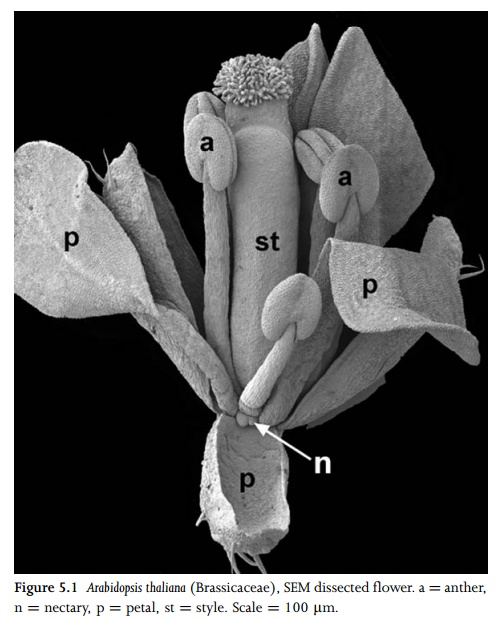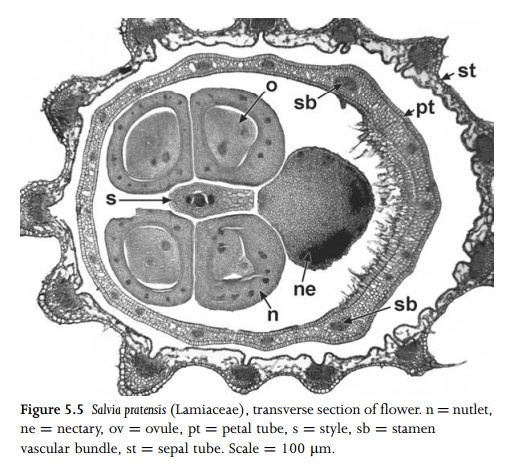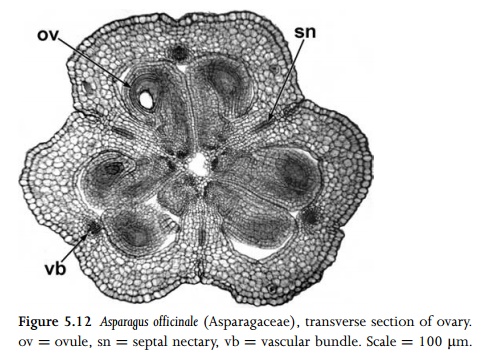Chapter: Anatomy of Flowering Plants: An Introduction to Structure and Development : Flower
Floral Secretory Structures
Floral Secretory Structures
Many
flowers bear specialized secretory structures, such as nectaries, elaiophores
and osmophores. These secrete nectar, oil and scent respectively, to attract
potential pollinators, including insects such as bees and moths, and also
vertebrates such as humming birds and bats.
Nectaries
are localized areas of tissue that regularly secrete nectar, a sugar-rich
substance that is attractive to animals. Nectaries usually consist
of secretory epidermal cells with dense cytoplasm, sometimes modified into
trichomes. Adjacent sub-epidermal cells may also be secretory, and in some
cases nectar passes to the surface through modified stomatal pores.
Vascular
tissue close to the nectary often consists mainly or entirely of phloem, which
transports sugars to the secretory region.
Nectaries
may occur on any floral organ, or they may represent an entire modified organ,
or even a novel structure. Most species of the mint family (Lamiaceae) possess
an enlarged nectariferous disc surrounding the base of the ovary (Fig. 5.5),
which is derived from developing ovary tissue. In most Brassicaceae (e.g.
Arabidopsis thaliana) the nectary is located at the base of the stamen filament
(Fig. 5.1). Septal nectaries are characteristic of many monocots; these occur
at the unfused carpel margins in monocots with postgenitally fused ovaries (Fig.
5.12). Nectar produced from septal nectaries is exuded from secretary epidermal
cells and emerges from small pores or slits on the surface of the gynoecium.



Flowers
of some insect-pollinated species lack nectaries, but possess other secretory
structures that attract potential pollinators. For example, some flowers bear
oil-secreting glands, termed elaiophores (Fig. 5.17), which are morphologically
similar to some types of nectary. Osmophores are modified floral

structures
that produce volatile secretions (scents); in some orchids the odours are
pheromone-like substances. Osmophores typically possess a relatively thick,
domed or papillate epidermis with densely cytoplasmic contents. In Platanthera
bifolia the epi-dermis of the labellum secretes a nocturnal scent, and in Ophrys
species osmophores on the labellum consist of areas of dome-shaped, papillate,
dark-staining epidermal cells. Flowers of Narcissus emit pollinator-specific
volatiles that are probably derived from the colourful corona.
Related Topics